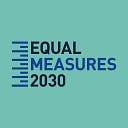Fueling Progress Towards Gender Equality and the 2030 Global Goals
By Alison Holder, Director of Equal Measures 2030
This story first appeared on the npENGAGE website
In 2017, Equal Measures 2030 — an independent civil society and private sector-led partnership — was established in order to connect data and evidence with advocacy and action as a means to drive gender equality and reach the Sustainable Development Goals by 2030.
In order to ensure that every girl and woman counts and is counted, we focus on putting easy-to-use data and evidence into the hands of girls’ and women’s movements, rights advocates and decision makers.
Officially launched at the Women Deliver Conference in May 2016, the partnership, comprised of ARROW, Data2X, Foment, Bill & Melinda Gates Foundation, IWHC, KPMG, ONE, Plan International and Women Deliver, brings together vast experience from different regions, thematic areas, sector and audiences to collectively drive transformative gender equality.
Maximizing each partners’ strength, global reach and diverse experience, we are coming together to tell the story of progress (and lack thereof) for girls and women against the promises guaranteed in the Sustainable Development Goals (SDGs). We’re also working to ensure that advocates have the data and evidence they need to push for faster change on gender equality.
Pulling together the facts, figures and stories that tell us where progress is being made and where it is lagging, we believe we will be better able to inspire real change and firm commitments from governments to really change the laws and policies and budget decisions that hold girls and women back.
How is connecting data and research to advocacy and action helping to move the needle forward for women and girls?
We know that across the SDGs, there is sparse or unreliable information about girls and women, especially the most disadvantaged. Even the most committed government would struggle to meet every SDG target without the right information to guide decision-making and to set priorities.
The Sustainable Development Goals promise to leave no one behind. But millions of girls and women will continue to be invisible and excluded in 2030 without more gender-sensitive data to inform decisions and investments that can transform their lives.
And it’s not just girls and women as a whole — some groups of girls and women are especially left behind whether because of where they live, their ethnicity or religious background, their sexual orientation, because they’re living with disabilities, or any other factor that leads to added discrimination. We can shed light on the reality of girls who are being excluded or not counted if we are able to close the gender data gap through evidence, analysis, and story-telling.
Through our global data and analysis work, we aim to provide a global snapshot of the progress being made towards SDGs for girls and women. And, in our initial six pilot countries (which include Colombia, India, Indonesia, Kenya and Senegal) we plan to take a deeper look, using national data, research and story-gathering to understand where progress is being made and where it is lagging.
The future for Equal Measures 2030
One of the first pieces of research that Equal Measures 2030 produced is a series of surveys to track perceptions of progress around gender equality and the SDGs and to identify how policymakers and advocates use gender data and evidence.
The survey asks policymakers and opinion leaders in five focus countries about their perceptions of progress on gender equality in their country, whether gender issues get too much or too little attention and what areas need to be prioritized to achieve sustainable development and gender equality.
A side event was held during UNGA, convening the core partners of Equal Measures 2030 along with key government and civil society stakeholders, to highlight the survey findings and discuss the ramifications on data-driven decision making.
Stay tuned for our upcoming work to track progress towards the SDGs for girls and women and to ensure that advocates and decision makers have the data they need to really bring about gender equality by 2030.
How to get involved
For more information, subscribe to the bimonthly newsletter, check out Equal Measures 2030’s website, or follow us on Twitter.
